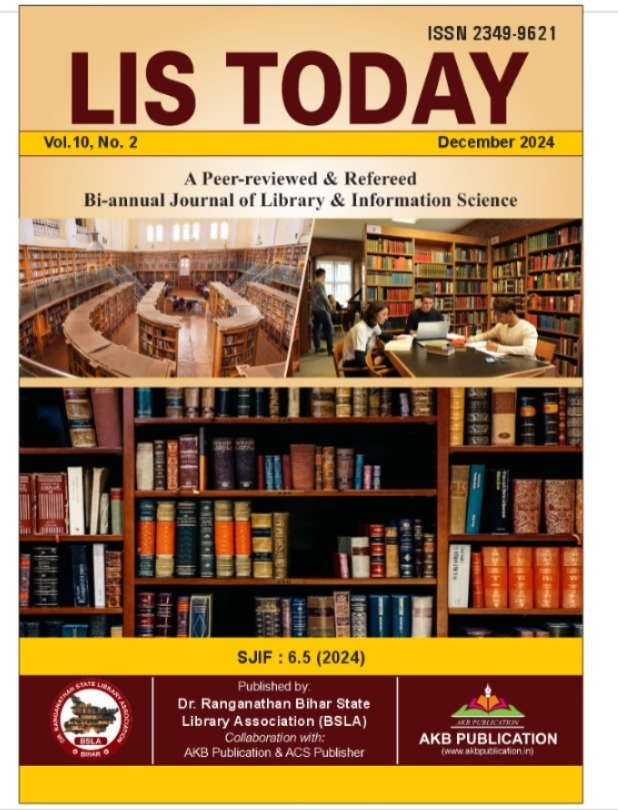Exploring the Use of Web 2.0 Tools in Academic Environments: A Case Study of North Campus Colleges, University of Delhi
DOI:
https://doi.org/10.48165/lt.2024.10.2.5Keywords:
Web2.0 toolsd, Higher Education, Academic Environments, North Campus, Colleges, University of DelhiAbstract
This study examines the adoption of Web 2.0 tools among colleges in the North Campus of the University of Delhi, highlighting their role in fostering digital engagement and academic outreach. Analyzing 14 colleges and 42 Web 2.0 tools, the study reveals that platforms such as X (formerly Twitter), Facebook, Instagram, YouTube, and LinkedIn are the most widely utilized. Hansraj College, Indraprastha College for Women, Kirori Mal College, and the School of Open Learning emerged as leaders in digital adoption, each employing five tools, while St. Stephen’s College and Shaheed Sukhdev College of Business Studies showed no usage. X leads as the most-used platform, with 23.81% adoption, followed by Facebook and Instagram at 21.43% each. YouTube and LinkedIn play significant roles in video content sharing and professional networking. However, niche tools like Google Play and TinyURL show minimal adoption. The study also highlights disparities in YouTube engagement, with Kirori Mal College achieving the highest subscriber count and video content output. Findings emphasize the importance of structured digital strategies to enhance outreach, institutional branding, and stakeholder interaction. Recommendations include broader adoption of underutilized tools, training for faculty and staff, and leveraging analytics to optimize engagement. This research underscores the transformative potential of Web 2.0 in academic environments.
References
Ajjan, H., & Hartshorne, R. (2008). Investigating faculty decisions to adopt Web 2.0 technologies: Theory and empirical tests. The Internet and Higher Education, 11(2), 71–80.
Anderson, P. (2007). What is Web 2.0?: ideas, technologies and im plications for education (Vol. 1, Issue 1). JISC Bristol. Bower, M., Hedberg, J. G., & Kuswara, A. (2010). A framework for Web 2.0 learning design. Educational Media International, 47(3), 177–198.
Churchill, D. (2009). Educational applications of Web 2.0: Using blogs to support teaching and learning. British Journal of Edu cational Technology, 40(1).
Gooding, J. (2008). Web 2.0: A vehicle for transforming education. International Journal of Information and Communication Tech nology Education (IJICTE), 4(2), 44–53.
Greenhow, C., & Lewin, C. (2019). Social media and education: Reconceptualizing the boundaries of formal and informal learning. In social media and education (pp. 6–30). Routledge.
Hussain, A. (2015). Adoption of Web 2.0 in library associations in the presence of social media. Program, 49(2), 151–169. Junco, R., Heiberger, G., & Loken, E. (2011). The effect of Twitter on college student engagement and grades. Journal of Comput er Assisted Learning, 27(2), 119–132.
Kane, G. C., Alavi, M., Labianca, G., & Borgatti, S. P. (2014). What’s different about social media networks? A framework and re search agenda. MIS Quarterly, 38(1), 275–304.
Kaplan, A. M., & Haenlein, M. (2010). Users of the world, unite! The challenges and opportunities of Social Media. Business Horizons, 53(1), 59–68.
Minocha, S. (2009). A case study-based investigation of students’ experiences with social software tools. New Review of Hyper media and Multimedia, 15(3), 245–265.
Selwyn, N. (2012). Social media in higher education. The Europa





